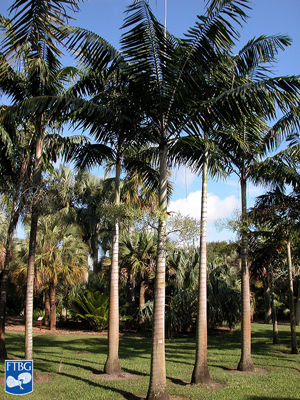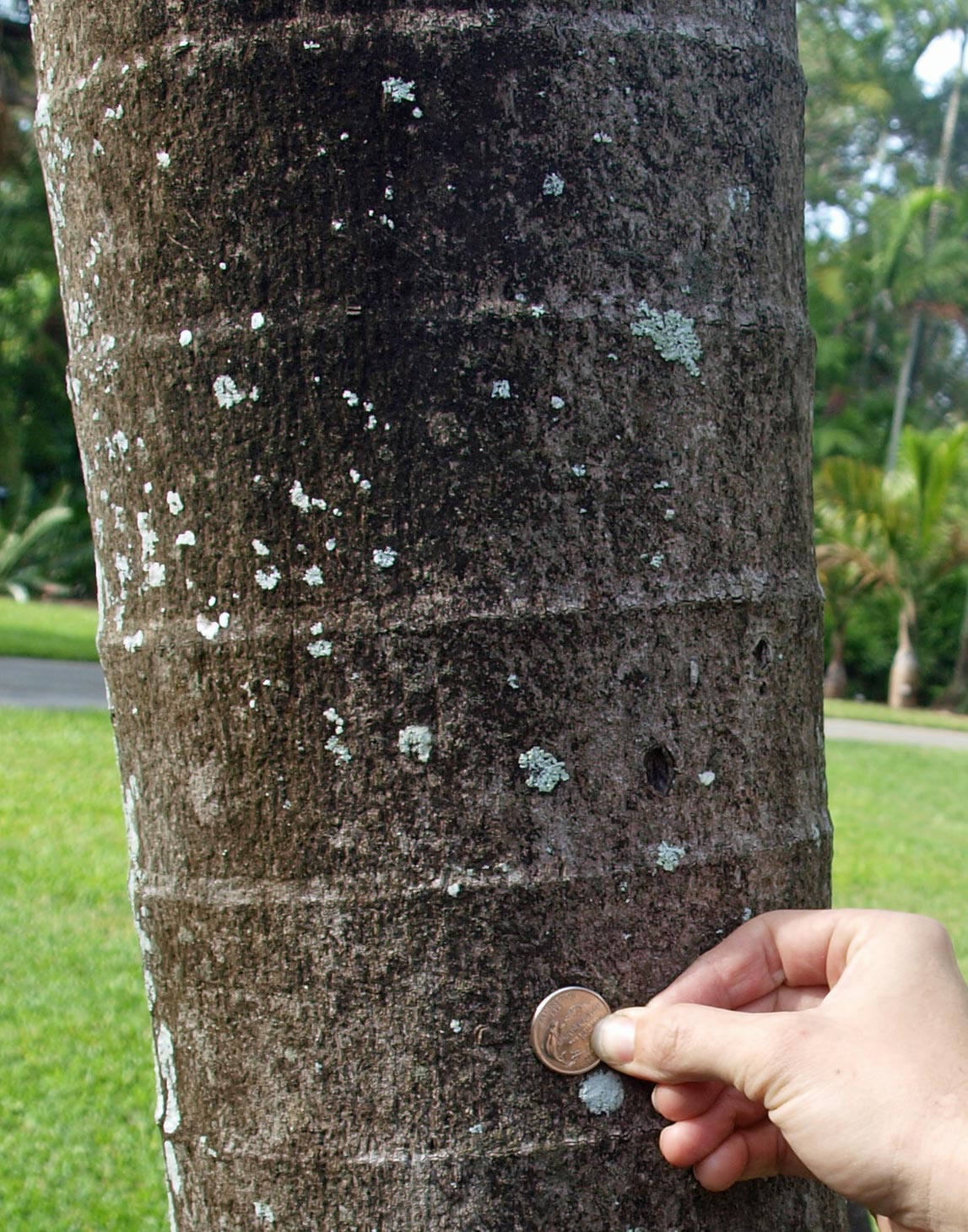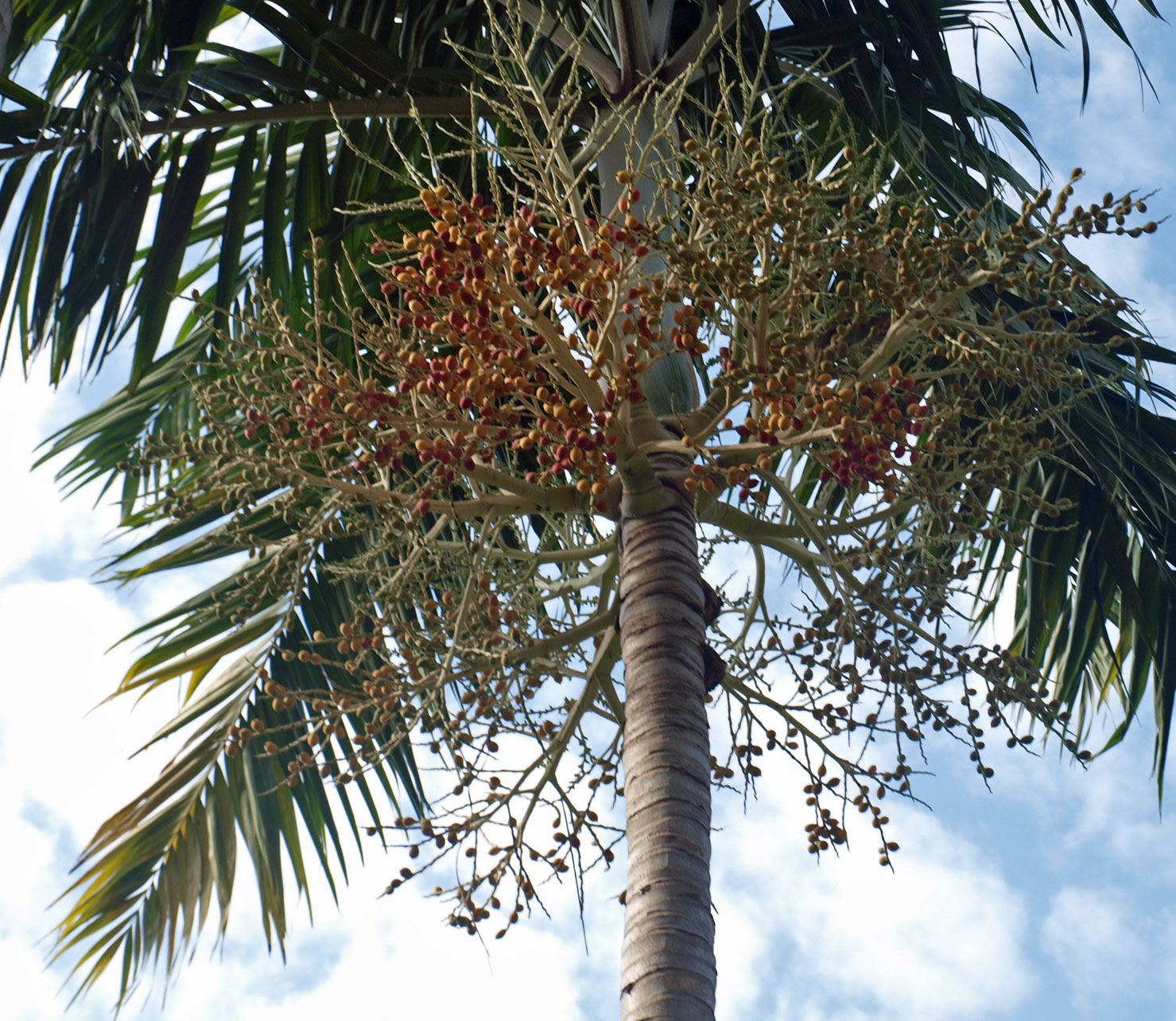Veitchia winin
|
Veitchia winin habit. Photograph courtesy of Fairchild Tropical Botanical Garden, Guide to Palms http://palmguide.org/index.php |
|
Veitchia winin stem |
|
Veitchia winin base of stem |
|
Veitchia winin stem with leaf scar rings |
|
Veitchia winin ripe fruit and inflorescence |
Common name
winin palm
Description
Stems: Solitary, slender, grayish brown stems to 18 m tall and up to 30 cm in diameter, bulging at the base, with close rings of leafleaf:
in palms -- the leaf blade (which is usually divided into leaflets or leaf segments), the petiole (or leaf stalk) and the sheath (which forms the attachment of the leaf to the stem)
scars. Leaves: Pinnatepinnate:
like a feather; palms with pinnate leaves usually have compound leaflets attached to a rachis, although a pinnate leaf may be entire with pinnate veins (e.g., <em>Chamaedorea metallica</em>)
, reduplicatereduplicate:
Most palm leaflets or leaf segments are obviously folded. If the folds create an upside-down V-shape, with the margins lower than the midrib (so that rain might "run off the roof"), the folding is reduplicate.
, to 3 m long, with an arching rachisrachis:
an extension of the petiole through the blade of a pinnate leaf to which leaflets are attached
holding regularly arranged, drooping leaflets in a single plane. The crown shaftcrown shaft:
a cylinder of clasping leaf sheaths toward the apex of the stem, found in some pinnate-leaved palms (e.g., <em>Wodyetia bifurcata</em>)
is 95-135 cm long, somewhat swollen at the base, pale green in color, with gray to brown scales at the apex. Petiole is reddish brown. Leaflets are green above and below, lanceolatelanceolate:
term to describe leaves and leaflets that are longer than wide and widest below the mid-point; lance-shaped
, with thick marginal ribs, prominent midribs and tiny scales along the veins on the abaxialabaxial:
away from or the side of an organ facing away from the axis (<strong>ab </strong>as in <strong>ab</strong>andon); for example, the lower surface of a leaf blade or petiole
surface. Leaflet tips are jaggedly toothed (somewhat praemorsepraemorse:
with a jagged edge or like a fish tail
). Flowers and fruits: Inflorescenceinflorescence:
the reproductive structure of a flowering plant, including palms, consisting of flowers and associated bracts
is arching, to 1m long and branched to three or four orders. Greenish to white male and female flowers are borne on the same inflorescenceinflorescence:
the reproductive structure of a flowering plant, including palms, consisting of flowers and associated bracts
. The somewhat flattened, ovoid, red fruits are 1.5-2.5 cm long.
Diagnostic features
Field: Erect, solitary palms with close leafleaf:
in palms -- the leaf blade (which is usually divided into leaflets or leaf segments), the petiole (or leaf stalk) and the sheath (which forms the attachment of the leaf to the stem)
scar rings on the slender grayish brown stems; leaves held mainly horizontally or higher; petiole reddish brown; leaflets drooping and growing in a single plane.
Lab: Lines of tiny white scales along ribs on the underside of the leaflets; obvious dark brown ramentaramenta:
irregularly shaped, thin scales, sometimes found along the abaxial midrib of a leaflet
along the base of the midrib; marginal veins and midrib prominent.
May be confused with
Adonidia merrillii, but it is has ascending leaflets held in a V-shape, rather than drooping leaflets. Other Veitchia species; see those descriptions for diagnostic features
Distribution
Native to Vanuatu
Additional comments
This Veitchia might hybridize with other species in landscape plantings. Similarities of palms in this genus make determination of species difficult.
Scientific name
Veitchia winin H.E.Moore
Family
Arecaceae/Palmae







